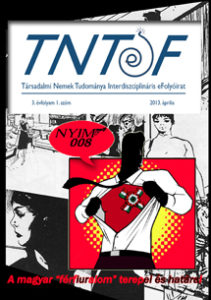The Encounter Of The Frock-coat And The Bodice By The Dressing-table, Or The Visual Constructedness Of Masculinity At The End Of The 19th Century
Main Article Content
Abstract
In my article I wish to disclose the toilette-secrets of the nineteenth century Hungarian gentleman. My intention is not to embarrass him, following some voyeuristic instincts, but to be able to observe the making of the man of breeding, literally ‘of a decent house’. Beauvoir’s famous statement, “One is not born but made to be a woman” can equally be applied to the other gender. Therefore I am exploring the elements of “masculine” appearance, with a particular focus on the relationship between fashion (clothes, make-up) and the masculine body. The data for my analysis includes descriptions of men’s clothes, articles and advice columns in contemporary Hungarian men’s fashion magazines (Férfi divatlap, Férfi divat) as well as their literary representations in some Hungarian novels at the time (by Ferenc Herczeg, Gyula Reviczky, Stefánia Wohl).

